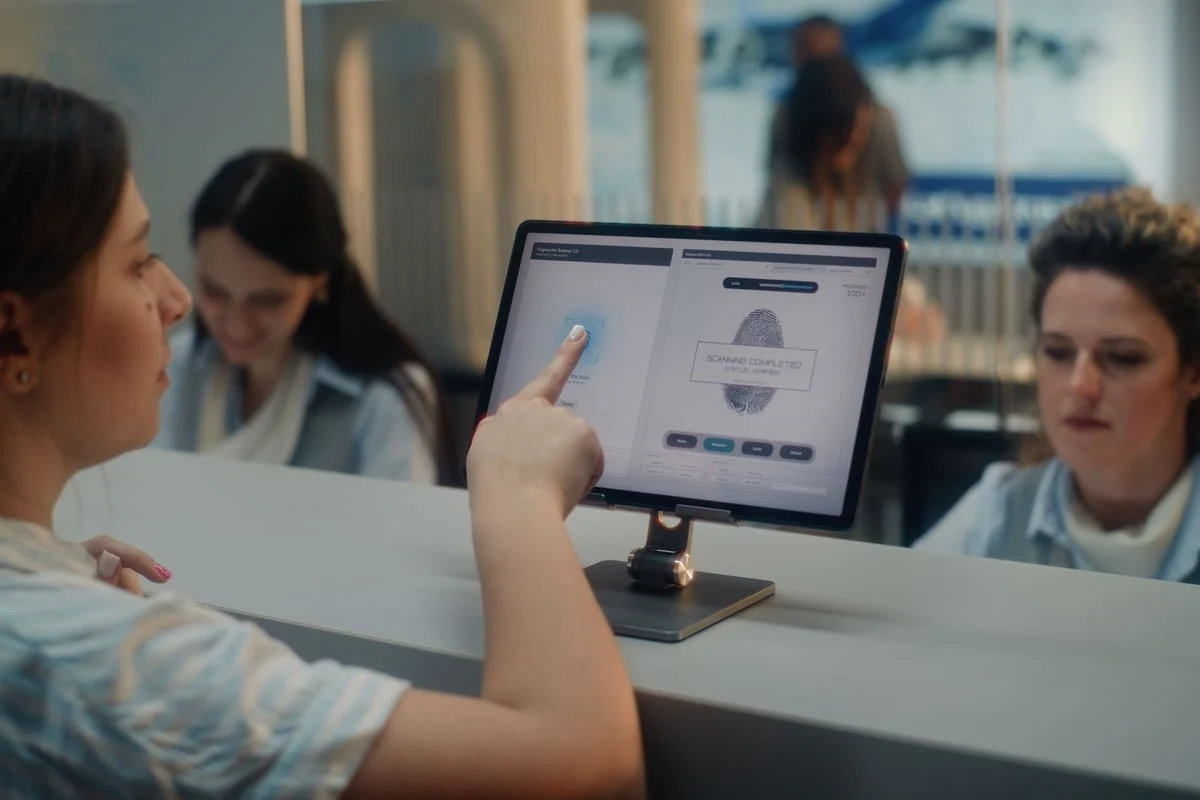Unless you've been living under a rock for the past year or so, you know by now Europe will be doubling down on biometric checks and start fingerprinting foreign travelers on October 12, 2025—and this includes American travelers.
As much as you've tried to stay on top of it—especially if you have a fall trip coming up soon—you might have noticed it's not the easiest feat to find the most relevant, up-to-date information.
Between the enigmatic responses from European officials and the conflicting details shared by media outlets, we don't blame you for not knowing what to expect. It's been a confusing last few months, but industry experts are finally stepping out of the shadows to spill the tea:

What Does EES Even Mean?
In the words of Vix Aguilera, a member of the Association of British Travel Agents, there are a number of changes Europe-bound travelers can expect once the clock strikes midnight on October 12 and the new Entry-Exit System (EES) is in place.
Mrs Aguilera took to TikTok to offer her insider's view on these, and based on her statement, Americans will no longer be required to wait in line to speak to a border agent upon landing in any European country. Instead, they will be directed to automated border control gates.
This practice has already been in place for a few years in a number of European airports, most notably Paris Charles de Gaulle and Rome Fiumicino, but the difference is that once they self-scan their way into a country, they will not get their passports stamped.
On the other hand, they'll have to submit their biometric data. This is how it will work in practice:

So How Will The Fingerprinting Work In Practice?
- You land at your European destination and step out of the plane
- Instead of waiting in line at border control, you ‘check-in' at a digital kiosk
- You will be instructed to scan your passport
- Next, the machine will take your fingerprints and scan your face
- Once the process is completed, you should be good to go
No more questions asked, no unnecessary delays at the border.
Mrs Aguilera adds that tourists will only be required to undergo this procedure one time, as their data will be stored for future travels up to 3 years later.

Based on our understanding, if a traveler does not return to Europe within the next 3 years and the period elapses without any additional visits, they will be treated in the future as a ‘newcomer'. They could, thus, be made to provide biometrics again.
For regular travelers who aren't away from Europe for this long, however, it could be a ‘once in a lifetime' thing. That's our interpretation, subject to further clarifications by the European Commission.
A Phased Roll-Out
But wait, there's more: the travel expert elaborated that the EES will be rolled out ‘in a phased approach' from October 12.

‘The way they are going to be doing this is by staggering it, so from days 1 to 29, there's going to be no minimum requirement, and after that, there's going to be 10% of passengers required to scan‘, she revealed.
This will help smooth out the launch in European airports that are not yet fully equipped to operate under the new EES rules. Every country is ‘within its rights' to implement immediately, but it's more likely they will opt for the gradual rollout to avoid border bottlenecks and operational issues.
How Is It Different From The ETIAS?
There's a lot of confusion on the internet regarding the EES and the ETIAS. We get it they're similar acronyms, but they're two separate entities.

The EES is the Entry-Exit System that will see American tourists and other tourists subject to fingerprinting. That's launching from October 12 in phases.
The ETIAS is an Electronic Travel Authorization (similar to an eVisa), that visa-exempt travelers like U.S. passport holders will need to apply for before visiting over 30 European countries. That's only coming into force at some point in 2026.
In sum, you need to comply with both the EES requirement and obtain an ETIAS to travel, though the latter is being introduced much later.
To always make sure you have the most up-to-date information, use our TOP Entry Requirement Checker to stay in the loop regarding any updates in entry and stay regulations affecting Americans traveling to Europe.
The Travel Off Path Advantage: Your Travel Toolkit
The 1-Minute Trip Check
Our flagship tool. Solves your entire pre-flight travel planning in a few easy steps. From entry rules to hidden fees and safety.
U.S. Travel Advisory Checker
An easy tool to check all the latest travel advisories from the U.S. State Department.
Entry Requirements Checker
An easy tool to check all the entry requirements for your destination.
The Upgrade Newsletter
Unlock travel tips, hot destination insights, and exclusive flight deals.
Join Our Community
With over 25,000 members on Facebook!
Subscribe To Our Latest Posts
Enter your email address to subscribe to Travel Off Path's latest breaking travel news, straight to your inbox.
